2/2002
InterConnex<br>The Breakthrough In Railway Travel?
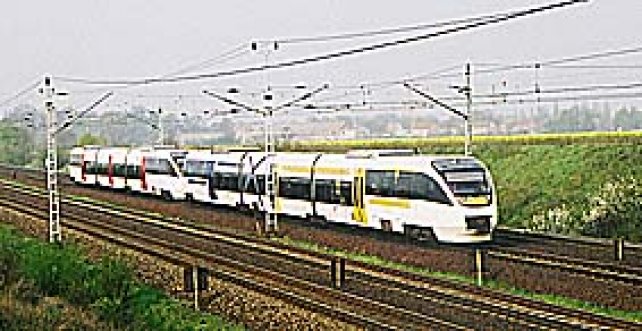
1 March 2002 saw the unveiling of Connex the „InterConnex“ (ICx) trainpair which offers an every-day Gera - Berlin - Rostock connection. In fact it is the first privately operated long-distance passenger connection in Germany.
The morning train DFR 80214 approaches Berlin-Schönefeld on 26 April 2002. Unit 0003 was hit by a failure for that moment, so 0009 replaced it. Thanks to this occasion this picture shows the different liveries of original regional OME "Talent" (behind) and special InterConnex unit.
Photo: Tomáš Kuchta
News From Taurus Family III
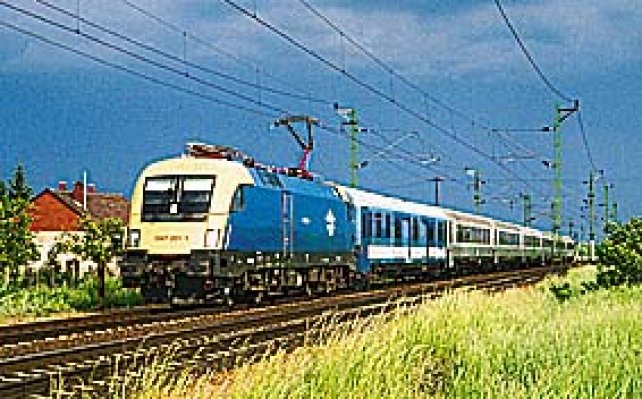
The Taurus family featured in previous editions of Railvolution, have recently expanded in terms of both fleet size and in areas of operation. New additions to the Dispolok have boosted this family, and with regular operation in the former Eastern-block country of Hungary these locomotives are establishing a wider field of operation.
In April 2002 Siemens TS supplied the first two dual-system Tauruses of the production type ES 64 U2 for the Hungary: for the Hungarian State Railways (MÁV) and the Györ-Sopron-Ebenfurth Railway (GySEV). The order placed last September for 10 MAV and 5 GySEV units equates to a price of around EUR 3,07 million per locomotive.
MÁV unit 1047 001 in the Budapest Nyugati station, after the roll-out ceremony, waiting for departure to its home depot.
Photo: Tomáš Kuchta
SBB Class 482
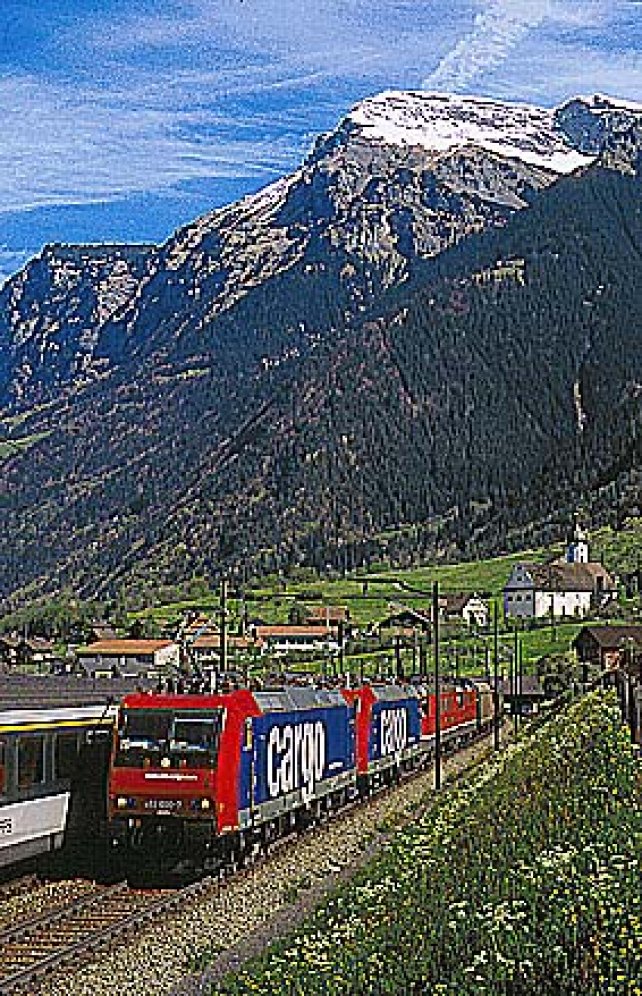
Based on earlier Letter of Intent, on 30 October 2001 Bombardier Transportation was awarded a contract by the freight division of the Swiss Federal Railways - SBB Cargo - for the delivery of 10 freight locomotives.
Because of immediate need and practical reasons, SBB decided not to wait for development of a new, custom built locomotive. Thus purchase of a proven design, based on Class 185 DB was prefered.
Designated as Class 482, they are to run primarily on the international North-South German-Swiss corridor.
482 000 + 482 001 + Ae 6/6 heading train 53634 Zürich RBL - Olten - Solothurn - Biel nearby Bettlach on 6 March 2002. The new locos made this journey to remove to Biel, where they underwent disturbing current measurements.
Photo: Armin Schmutz
Cooperation On Locomotive Modernising For Russian Railways
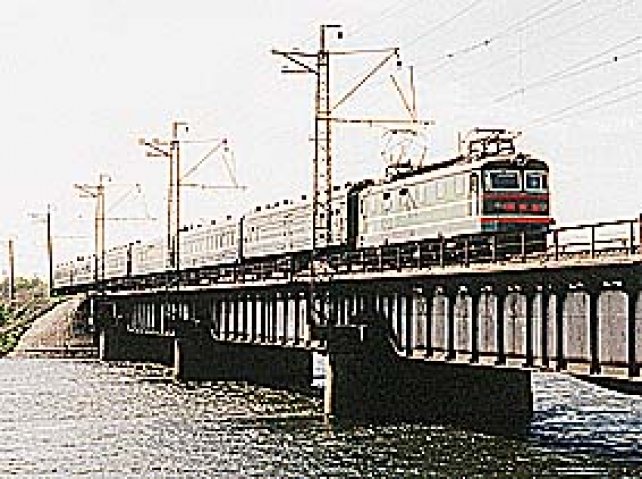
The railways in Russian Federation, Ukraine and other states of CIS (Commonwealth of Independent States) or the former Soviet Union used to be a great subscriber for electric locomotives used for fast train traffic on both DC and AC voltages. After the deliveries got discontinued, all the customers from this region, Russian railways included, started to favour saving investments, spent on modernising the rail stock, in order to extend the service life of the currently used
locomotives.
Currently a Czech/Russian joint venture KRP Invest (with share of Ministry of Transport of the Russian Federation, Shiran General Trade Ltd and ŠKODA Holding a. s. Plzeň) is being prepared, to manage not only repair works, but later also new locomotive production for Russian railways.
RŽD unit ChS 2-097 caught by Nikopol on 4 May 1997.
Photo: Yves Steenebruggen
Locomotive G 2000 BB
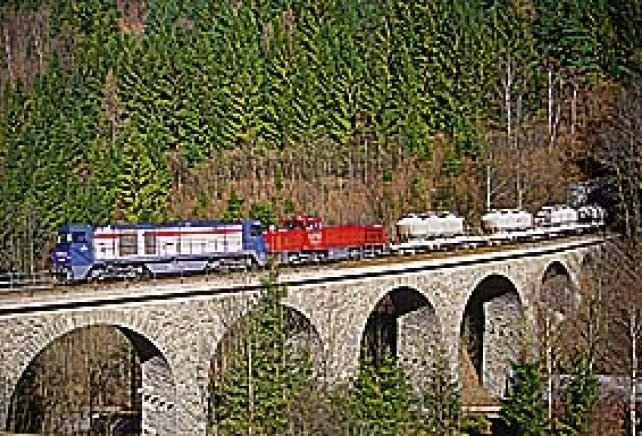
One of the most spectacular exhibits at the InnoTrans 2000 show was the new VSFT designed, blue and silver liveried diesel-hydraulic locomotive, with an outstanding and very unusual shape to the bodywork and cab. Since that show, two prototypes have covered a substantial number of kilometres, and from autumn 2001, regular deliveries of the series vehicles have been made to a number of private operators in Germany. So the G 2000 BB type has already become a serious player in the field of modern diesel locomotives currently available on the European market.
The Neusser Eisenbahn operated machine 1001 040 is the first, which was not delivered in the blue-silver livery, but painted in livelier colours scheme.
Photo: VSFT
The Modernised Railcar Of The ČD Class 812
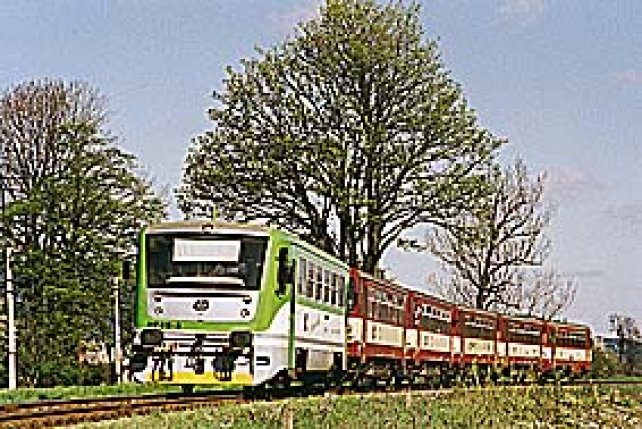
The two-axle railcars of Class 810 (formerly M 152.0) are now, and have been the most widely used railcars operated by both the former Czechoslovak State Railways and their successors the České dráhy (ČD, Czech Railways) and Železničná spoločnosť (ŽS, Railway Company). A total of 678 vehicles were produced by the then Moravskoslezská vagonka Studénka between the years 1975 - 1984.
In April 2001, a severely damaged Class 810 railcar was taken into Pars nova Šumperk works. Scope of damage, unavailability of original components and their high price led Pars nova to offer the Czech Railways a proposal to completely rebuild the vehicle…
Regional train Os 13112 Ostrava hl. n. - Ostravice hauled by the car 812 613 (rebuilt 810 613) approaches its final destination on 28 April 2002.
Photo: Tomáš Kuchta
GTW 2/8 SBB
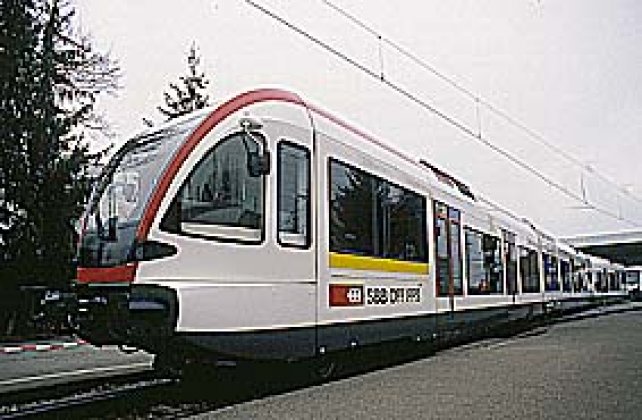
On 1 March 2002 the first two units of this type were introduced to the general public of Switzerland. These trains are designated series RABe 520 and destined for the Seetalbahn (Luzern - Lenzburg line), and some other lines in the Aargau canton. After many different versions of GTW 2/6 type, this one is the first four-section unit designated type GTW 2/8 - eight axles, including two powered.
A total of 17 multiple unit sets worth CHF 102 million (EUR 70 million) are part of the package provided jointly by the Swiss federal government, the Aargau and Luzern cantons and Swiss Federal Railways (SBB), which should ensure enhanced safety and increased ridership on the Seetalbahn.
Cab fronts of the GTW 2/8 type units have a brand new shape, produced from laminated plastics.
Photo: Armin Schmutz
DESIRO UK
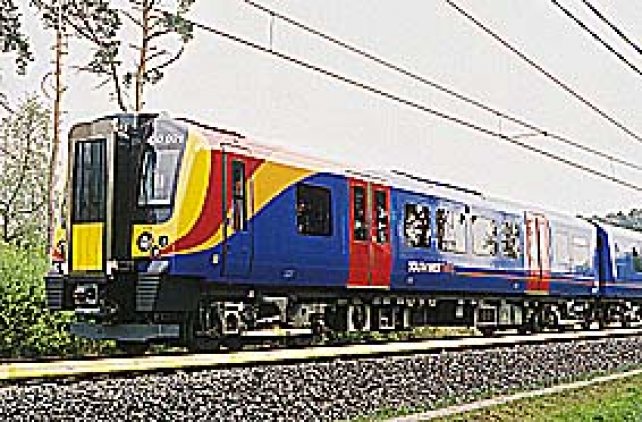
On 24 April 2002, exactly a year after Angel Trains signed the deal with Siemens TS for the largest rolling stock order ever placed in the UK, the first Desiro UK trainset was unveiled. The small-scale ceremony was held in the Wildenrath Test Centre and introduced the South West Trains unit 450 001.
The 450 001 SWT unit during one of its many rides at Wildenrath at the presentation held on 24 April 2002.
Photo: Tomáš Kuchta
Betuweroute
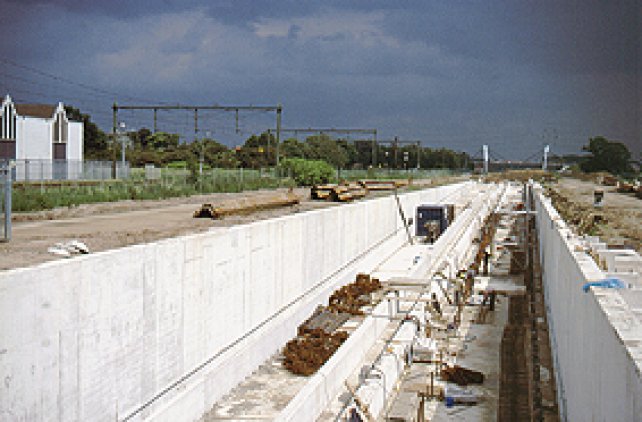
Amongst the most important infrastructure plans, which should help to stop the falling share of rail traffic on European transportation market, is the project known as Betuweroute (named after region, situated east of Rotterdam). Once it is completed, it will be a double track freight railway linking the Port of Rotterdam directly to the European hinterland. In the last two years, the first parts of this building began operation and the rest is intensively under construction, for the first freight trains to run between 2005 and 2006.
The eastern end of the Betouweroute - tunnel entrance below Zevenaar seen in direction of Germany (Eastwards from Zevenaar station), on 25 May 2002.
Photo: Ernst van Gulden
And much more!
Cover of 2/2002
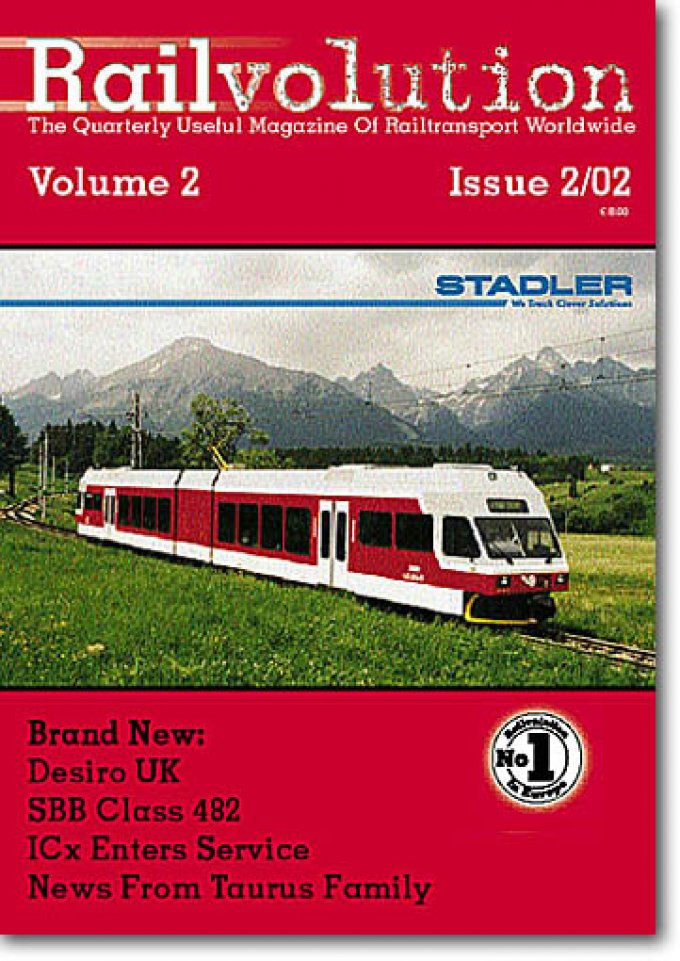
Poster
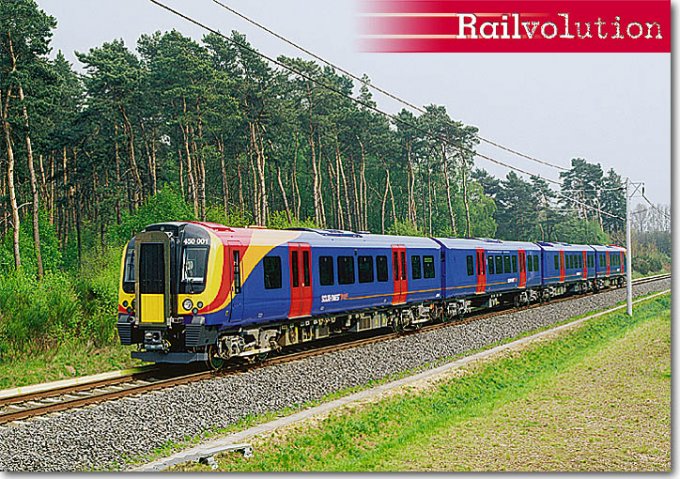
Features: The SWT Desiro UK unit 450 001
